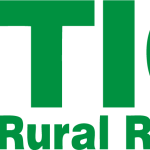Welcome to part ten of the column series on soybean micronutrients. In previous weeks I discussed boron, chloride, cobalt, copper, iron, manganese, molybdenum, and nickel. I will quickly cover how zinc (Zn) is essential to soybeans, known deficiencies or toxicities in the region, factors of zinc availability in soil, soil and plant tissue testing, and fertilizer recommendations. Micronutrients for Soybean Production in the North Central Region is a good regional publication that addresses zinc that I utilized as a resource for this news column.
In soybeans, zinc is a key micronutrient in enzymes and healthy metabolic function in the plant. Zinc deficiency symptoms includes yellow mottling between the leaf veins and appears in the upper leaves first. Zinc deficiency in crops have been observed in southeast Nebraska for decades and was mentioned by USDA-NRCS in soil surveys. Deficiency symptoms are likely to show up in corn first (large yellow to white band in upper leaves) since it is more sensitive to low zinc availability.
Soybeans take up zinc as a divalent cation (Zn2+) from the soil just as cobalt, copper, manganese, and nickel. Zinc is found in soil minerals and organic matter and is held by the cation exchange capacity of the soil. Zinc availability is more likely to be low in calcareous soils (soil pH above 7.3 and excess free lime), where topsoil has been removed (erosion, land leveling, and terracing) or very sandy soils. Many fields have had soil moved for leveling for flood irrigation or for terraces. Zinc and iron deficiency in soybeans are likely the most common micronutrient deficiencies in southeast Nebraska.
Soil test analysis is very effective at predicting the need and crop response to zinc fertilization. A zinc fertilizer program for corn will ensure that zinc is more than adequate for soybeans in the rotation. Soil test (DTPA extraction) zinc values above 0.8 part per million (ppm) is recommended for corn based on an 8-inch depth. Kansas State University has a soil test zinc critical value of 1.0 ppm based on a 6-inch sampling depth. Soil sampling by management zone or grid can help to identify low soil zinc areas within fields. Plant tissue analysis can be used as a quality control check for your zinc soil test analysis and fertilization program. Taking the uppermost fully mature trifoliolate during full bloom, typically in early July is the best time. Learn more about how to conduct soybean plant tissue sampling by watching a video on my website at croptechcafe.org. The zinc sufficiency range is 25 to 60 ppm in the tissue sample.
Zinc should be included with your standard soil test analysis in southeast Nebraska. Zinc fertilizer is needed for corn (more sensitive than soybean) when the zinc DTPA analysis value falls below 0.8 to 1 ppm (depends on sampling depth). Zinc fertilizers should be chosen based on solubility, cost per pound of zinc, ease of application, and residual effect. On non-calcareous low zinc testing soil, 3 to 5 pounds of zinc per acre as zinc sulfate (9 to 15 lbs/acre of product) dry blended with other fertilizers is an effective option. I look forward to summarizing this soybean micronutrient series in next week’s column. You can share or read this news column online through my local website for Saline, Jefferson, and Gage counties at croptechcafe.org. Know your crop, know your tech, know your bottom line.


